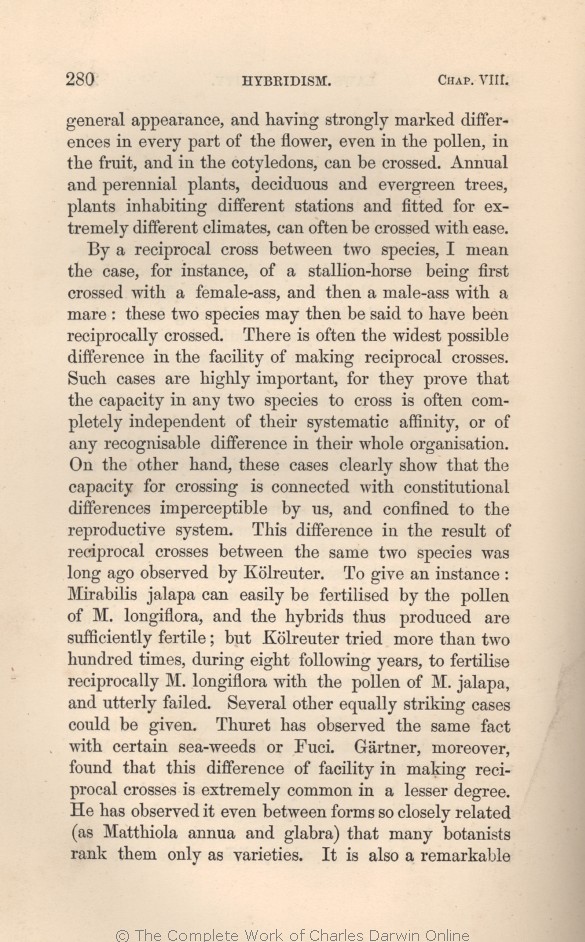general appearance, and having strongly marked
differences | differences 1859 1861 1866 1869 1872 | | differ- ences 1860 |
|
|
By a reciprocal cross between two species, I mean the case, for instance, of a
stallion-horse | stallion-horse 1859 1860 1861 1866 1869 | | female-ass 1872 |
| with 1859 1860 1861 1866 1869 | | by 1872 |
| female-ass, 1859 1860 1861 1866 1869 | | stallion, 1872 |
| male-ass with a mare: 1859 1860 1861 1866 1869 |
| mare by a male-ass; 1872 |
| or 1859 1860 1861 1866 1869 | | that is 1872 |
| recognisable 1859 1860 1861 | recognisable 1866 1869 1872 |
| whole organisation. 1859 1860 1861 |
| whole organisation, except in their reproductive systems. 1866 1869 |
| structure or constitution, excepting in their reproductive systems. 1872 |
| 1 blocks not present in 1859 1860 1861; present in 1866 1869 1872 | | The diversity of result
in reciprocal crosses between the same two species was long ago observed by Kölreuter.
|
| jalapa 1860 1861 1866 1869 1872 | | jalappa 1859 |
| jalapa, 1860 1861 1869 1872 | | jalappa, 1859 | | Jalapa, 1866 |
| forms so 1859 1860 1861 1866 | forms so 1869 1872 |
| (as 1859 1860 1861 1866 | | forms (as 1869 1872 |
| that 1859 1860 1861 1866 | | which 1869 1872 |
| them 1859 1860 1861 1866 | them 1869 1872 |
|









